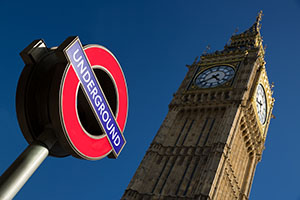 It’s noticeable just how fickle consumer confidence is in the USA when faced with a political and economic crisis. Similar to many analysts and market commentators, in this column we’ve long held the view that the USA economy had topped out and was only moving forward due to the QE to infinity programme Ben Bernanke, the Fed chairman, was adhering to each month. The $85 billion asset purchase scheme is continuing to create a bubble in equities and a jobless recovery with very little ‘trickle down’ to the real economy; Wall Street was being saved whilst Main Street was largely ignored. The latest Gallup poll appears to confirm that consumer confidence is really on a knife edge, and in an economy 70% reliant on consumers to move forward, protecting that confidence is of paramount concern.
It’s noticeable just how fickle consumer confidence is in the USA when faced with a political and economic crisis. Similar to many analysts and market commentators, in this column we’ve long held the view that the USA economy had topped out and was only moving forward due to the QE to infinity programme Ben Bernanke, the Fed chairman, was adhering to each month. The $85 billion asset purchase scheme is continuing to create a bubble in equities and a jobless recovery with very little ‘trickle down’ to the real economy; Wall Street was being saved whilst Main Street was largely ignored. The latest Gallup poll appears to confirm that consumer confidence is really on a knife edge, and in an economy 70% reliant on consumers to move forward, protecting that confidence is of paramount concern.
Gallup’s consumer confidence survey has largest drop since 2008
Gallup, one of the stalwarts of conducting surveys over the last decades, has confirmed that the weekly drop in U.S. economic confidence is the largest drop since ’08. Americans’ confidence in the economy has deteriorated more in the past week during the partial government shutdown than in any week since Lehman Brothers collapsed on Sept. 15, 2008, which triggered a global economic crisis. Gallup’s Economic Confidence Index tumbled 12 points to -34 last week, the second-largest weekly decline since Gallup began tracking economic confidence daily in January 2008. Fiscal brinksmanship in Washington is related to many of the largest weekly drops in Americans’ confidence in the economy since 2008.
UK manufacturing production misses expectation at -1.2%
U.K. manufacturing and industrial production figures have been printed in the morning session and the numbers took the markets by surprise, they unexpectedly fell in August by the most in almost a year, causing analysts and investors to doubt the strength of the third-quarter UK recovery. Industrial output dropped 1.1 percent from July with manufacturing production down 1.2%, the Office for National Statistics said today in London. Factories cut output by 1.2 percent, with pharmaceuticals contributing most to the decline.
Market snapshot at 10:00 am UK time
Equity markets across Asia-Pacific experienced mixed fortunes in the overnight session as investors weighed up the negative impact of the continued shutdown in Washington versus the positive effect of the White House confirming Janet Yellen to head up the Federal Reserve. Japan’s Nikkei 225 index was up 0.4 per cent and the Shanghai Composite was 0.2 per cent higher, but Hong Kong’s Hang Seng index suffered a 0.7 per cent decline.
European markets are mainly in the red in the morning European session; STOXX is up marginally by 0.05%, FTSE down 0.22%, CAC down 0.15%, DAX down 0.09%, with the Athens exchange down the most by 1.34% on the day.
Commodities are mainly in the red, ICE WTI oil down 0.15% at $103.33 per barrel, NYMEX natural up 0.03% at $3.72 per therm. Gold on COMEX is down 0.51% at $1317.90 per ounce, with silver down 0.66% at $22.30 per ounce.
Equity index futures are currently suggesting a positive open for USA bourses, DJIA up 0.19%, SPX up 0.26% and the NASDAQ, which suffered a 2% fall yesterday, up 0.26%.
Forex focus
The yen declined by 0.1 percent to 131.68 per euro early in the London session, weakening for a second day. It fell by 0.5 percent to 97.34 per dollar. The U.S. currency rose 0.3 percent to $1.3528 per euro. The U.S. Dollar Index added 0.2 percent to 1,012.16. It fell to 1,007.87 on Oct. 3rd, the lowest closing level since Feb. 20th.
Sterling fell by 0.7 percent to $1.5977 early in London, reaching the lowest level seen since Sept. 24th. The U.K. currency depreciated 0.3 percent to 84.65 pence per euro. Sterling has declined by 1.2 percent during the past week, the worst performer amongst the 10 developed-nation currencies tracked by Bloomberg’s Correlation-Weighted Indices. The dollar rose 0.5 percent and the euro was little changed. The pound slid to the lowest level in two weeks versus the dollar after the report showing U.K. industrial production fell in August, casting doubt on the strength of the economy in the third quarter.
The Australian dollar added 0.1 percent to 94.34 U.S. cents late in Sydney after earlier climbing by as much as 0.3 percent. It touched 94.84 cents yesterday, the highest since Sept. 19th. New Zealand’s kiwi currency bought 82.88 U.S. cents, little changed from yesterday, after rising as much as 0.4 percent.





